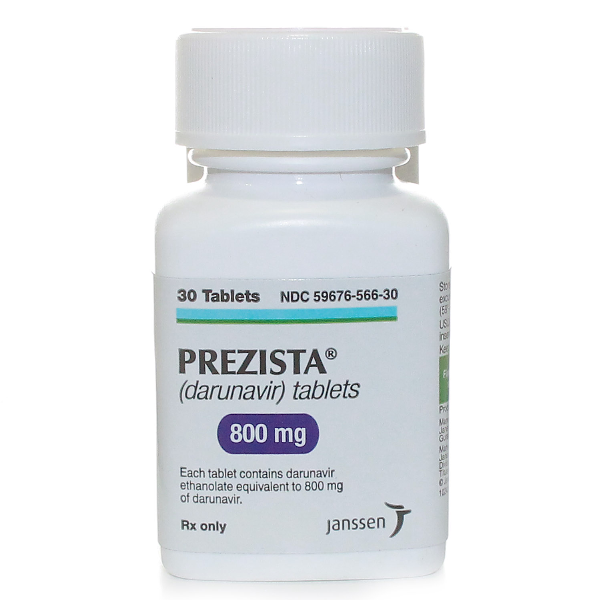Janssen Ortho and the Pharmaceutical Appendix
This is going to be a quick summary. Janseen Ortho LLC v. United States is a fairly complicated decision on the classification and rate of duty applicable to darunavir ethanolate, which is an HIV medicine sold under the brand name Prezista. There are two issues. The first is the classification and the second is whether the product, once properly classified, is entitled to duty-free entry under the Pharmaceutical Appendix.
In terms of classification, I am going to cut to the chase and tell you the product is classified under HTSUS item 2935.00.60 (which no longer exists). Getting there required an analysis of whether the compound has a molecular species corresponding to a repeating unit cell, whether the structure is defined by a constant ratio of elements, and whether darunavir hydrate is an impurity the presence of which does not change the classification. The Court of International Trade reviewed all those questions and concluded that the proper classification is in 2935.00.60, not in Heading 3003 as the plaintiff asserted.
The application of the Pharmaceutical Appendix does not often generate much controversy, so it is worth a more detailed look here. The Appendix came about as part of the Uruguay Round of WTO talked. It lists about 7,000 pharmaceuticals by name and provides for duty-free treatment for them. These items may be identified with the Special Program Indicator K in the special rate of duty column of the HTSUS.
Table 1 of the Appendix lists items by International Non-proprietary Names, which is the agreed generic name for a drug. Dirunavir is listed on Table 1. However, the product is actually known as darunavir ethanolate. Thus, the government argued that it is not included on Table 1 and not entitled to duty-free entry.
This did not fly. General Note 13 states, in part, that the symbol "K" applies to any product "by whatever name known" classifiable in the relevant HTSUS item. Here, the Court noted a number of references to darunavir ethanolate as darunavir and testimony that the names are used interchangeably. Given that evidence, the Court determined that darunavir ethanolate is a name by which darunavir is known, making it a product listed on the Pharmaceutical Appendix in Table 1. The Court, therefore, declined to also decide whether the merchandise is covered by combining Table 1 with the chemical prefixes listed in Table 2.
All of that is fairly technical. The important takeaway for the plaintiff is that it appears to be entitled to a $100 million (plus interest) refund on this issue. That, in and of itself, is enough to ensure that we are likely going to see an appeal.
In terms of classification, I am going to cut to the chase and tell you the product is classified under HTSUS item 2935.00.60 (which no longer exists). Getting there required an analysis of whether the compound has a molecular species corresponding to a repeating unit cell, whether the structure is defined by a constant ratio of elements, and whether darunavir hydrate is an impurity the presence of which does not change the classification. The Court of International Trade reviewed all those questions and concluded that the proper classification is in 2935.00.60, not in Heading 3003 as the plaintiff asserted.
The application of the Pharmaceutical Appendix does not often generate much controversy, so it is worth a more detailed look here. The Appendix came about as part of the Uruguay Round of WTO talked. It lists about 7,000 pharmaceuticals by name and provides for duty-free treatment for them. These items may be identified with the Special Program Indicator K in the special rate of duty column of the HTSUS.
Table 1 of the Appendix lists items by International Non-proprietary Names, which is the agreed generic name for a drug. Dirunavir is listed on Table 1. However, the product is actually known as darunavir ethanolate. Thus, the government argued that it is not included on Table 1 and not entitled to duty-free entry.
This did not fly. General Note 13 states, in part, that the symbol "K" applies to any product "by whatever name known" classifiable in the relevant HTSUS item. Here, the Court noted a number of references to darunavir ethanolate as darunavir and testimony that the names are used interchangeably. Given that evidence, the Court determined that darunavir ethanolate is a name by which darunavir is known, making it a product listed on the Pharmaceutical Appendix in Table 1. The Court, therefore, declined to also decide whether the merchandise is covered by combining Table 1 with the chemical prefixes listed in Table 2.
All of that is fairly technical. The important takeaway for the plaintiff is that it appears to be entitled to a $100 million (plus interest) refund on this issue. That, in and of itself, is enough to ensure that we are likely going to see an appeal.




Comments